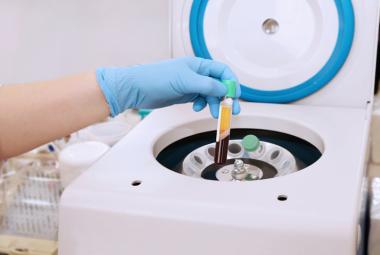Cancer is the leading cause of death among U.S children between infancy and 15 years of age. Approximately 11,210 new cases of pediatric cancer were diagnosed in children 0–14 years of age in 2011.
A recent study has suggested important role of breastfeeding in the prevention of certain childhood cancers, such as lymphoblastic leukemia, Hodgkin's disease, neuroblastoma and certain central nervous system cancers.[1] In this study, the researchers found high levels of cancer-fighting TNF-related apoptosis inducing ligand (TRAIL) in human milk, which may be one of the sources of breast milk's anti-cancer activity.
The study was carried out at the nursery of the Institute for Maternal and Child Health “Burlo Garofolo” in Trieste, Italy. Mothers with no eclampsia, infection, or fever were included, who delivered healthy newborns at term with a 5-minute Apgar score ≥ 7 and with no major congenital malformations. Women were asked to sign an informed consent form. With the help of a nurse, women expressed 1 mL of colostrum by hand or/and by electric pump, at 24-48 hours after delivery. In case of a longer stay in the hospital because of cesarean section (CS), 1 mL of breast milk was also collected at 72-120 hours after delivery. They recorded data on maternal preeclampsia and autoimmune diseases (before and during the last pregnancy), maternal age at delivery, parity, type of birth, time of rupture of the membranes, birth weight gestational age of the baby and Apgar score. Human serum samples (n = 40) were obtained from the blood bank of the University Hospital of Ferrara from healthy women. All biological samples and 7 types of liquid infant formulas from 5 different brands were aliquoted, stored at -80°C, and thawed only once before the assay (ELISA). The colostrum, mature breast milk, healthy serum samples and formula were tested to measure their level of TRAIL.
The median TRAIL value measured in the 55 colostrum samples was 19.87 ng/mL (range 1.50-298.16 ng/mL). They found no significant difference in colostrum TRAIL values between vaginal and cesarean section deliveries (P = .21). The median TRAIL value in the breast milk was 9.57 pg/mL. In the paired samples, there was a significant difference in TRAIL concentrations between the samples of colostrum and samples of breast milk (P = .007), with median TRAIL values in breast milk about 4-fold lower than in colostrum (7.15 vs 30.3 ng/mL). It is particularly noteworthy that the levels of TRAIL in both colostrum and breast milk samples were much higher (P < .001) than those found in the serum samples of a group of age-matched healthy women, characterized by mean and median serum TRAIL values of 64 and 67 pg/mL, respectively. In all samples of liquid infant formulas analyzed, TRAIL was not detectable.
This is the first study in which TRAIL has been measured in colostrum and human breast milk. This study has revealed much higher TRAIL concentrations in colostrum and breast milk compared to the levels of circulating serum TRAIL. The mean level of soluble TRAIL detected in colostrum reached 48.6 ng/mL, which is > 400-fold greater than the level found in human serum. Although researchers observed a significant decline in levels of TRAIL in human breast milk measured at day 4 or 5, these concentrations were still much higher than those usually found in human serum/plasma and were in the range of concentrations that are able to kill cancer cells. Thus, this study suggests that high concentrations of soluble TRAIL present in human colostrum and breast milk might play a key role in mediating the anticancer activity of human milk.
Previously another study has suggested presence of HAMLET (human a-lactalbumin made lethal to tumor cells) in human breast milk, which has been proved effective against certain cancers.[2]
Sonia Shoukat M.D.
Thomas W. Hale Ph.D.
InfantRisk Center
References:
- Riccardo Davanzo, MD, PhD1, Giorgio Zauli, MD, PhD1, Lorenzo Monasta, MSc, DSc1, Liza Vecchi Brumatti, MSc1, Maria Valentina Abate, MD2, Giovanna Ventura, MD2, Erika Rimondi, MSc, PhD3, Paola Secchiero, MSc, PhD3, and Sergio Demarini, MD1. Human Colostrum and Breast Milk Contain High Levels of TNF-Related Apoptosis-Inducing Ligand (TRAIL).Journal of Human LactationXX(X) 1–3.
- Ann-Kristin Mossberg, Kenneth Hun Mok, Ludmilla A. Morozova-Roche and Catharina Svanborg. Structure and function of human a-lactalbumin made lethal to tumor cells (HAMLET)-type complexes. doi:10.1111/j.1742-4658.2010.07890.x.







